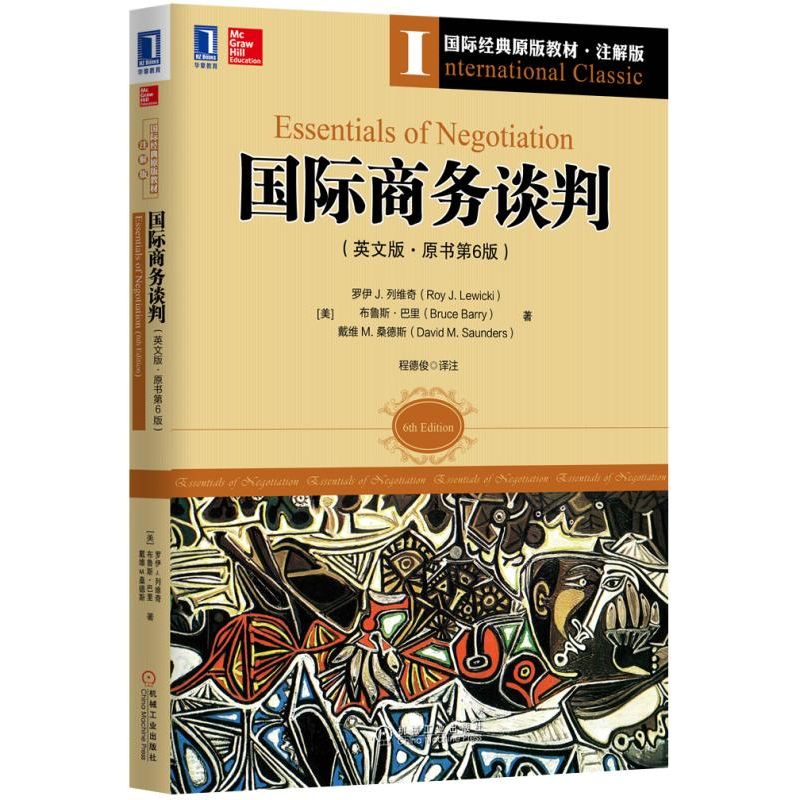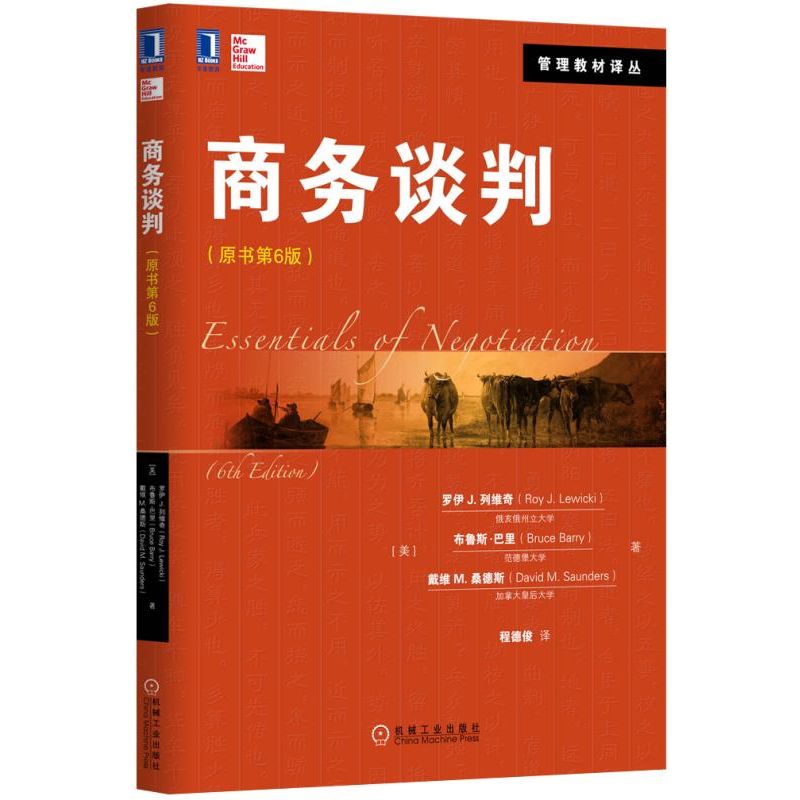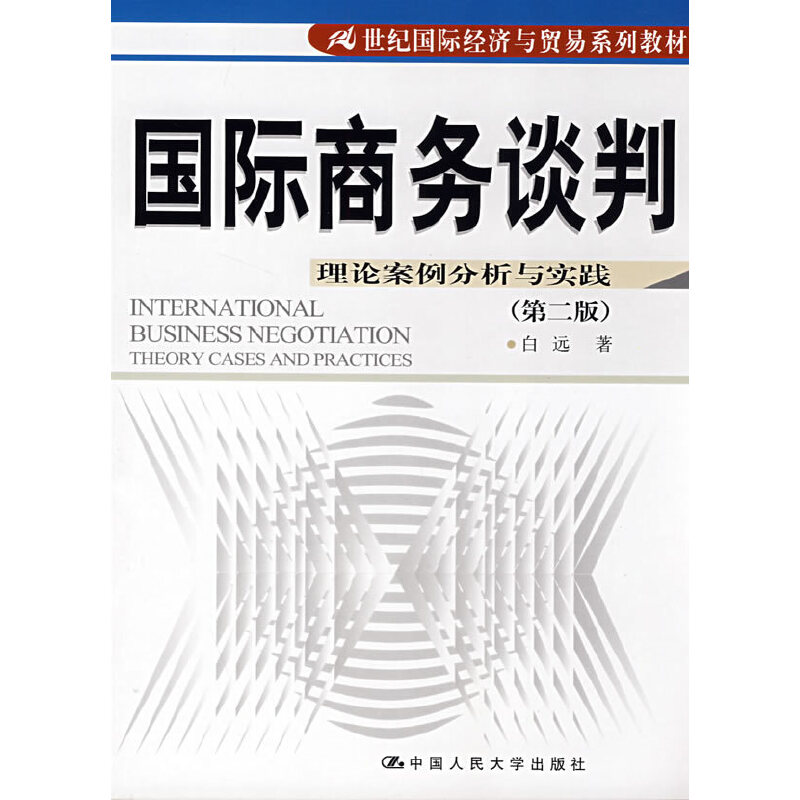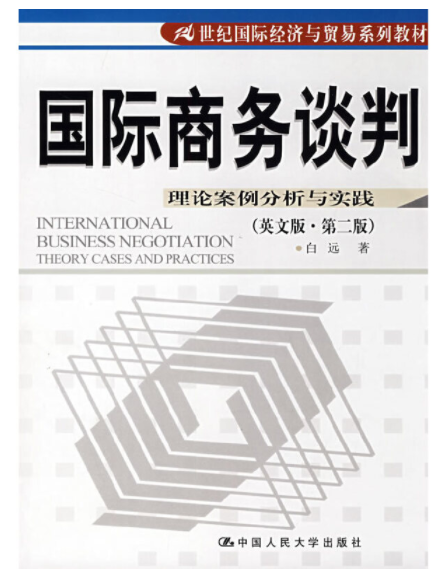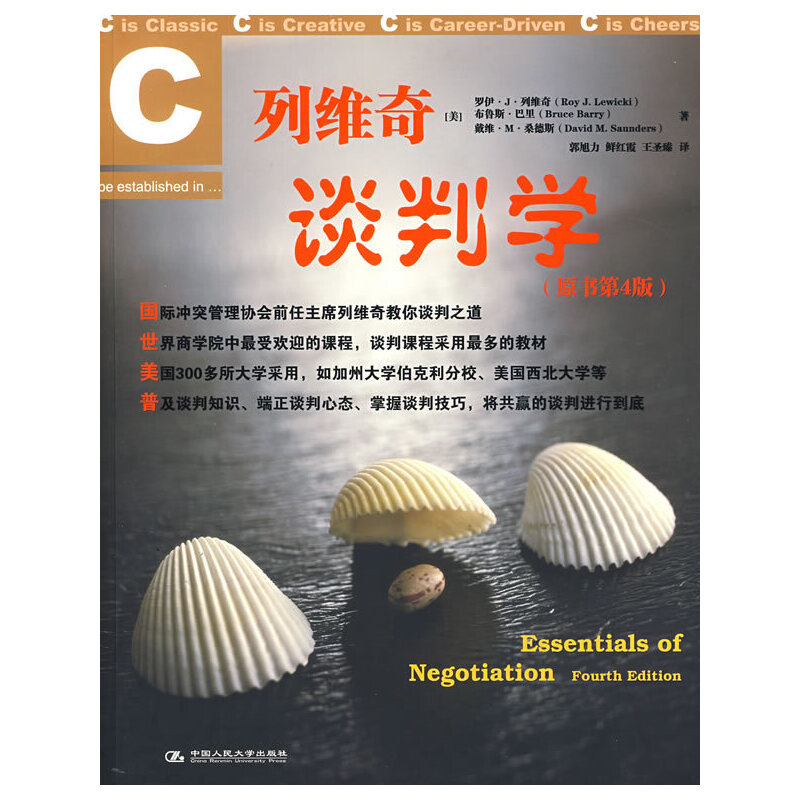- 机械工业出版社
- 9787111556343
- 1-7
- 127962
- 60258567-1
- 平装
- 16开
- 2016-12
- 280
- 306
- 管理学
- 工商管理
- F740.41
- 国际经济与贸易
- 本科
作者简介
内容简介
现实生活中,谈判无处不在。谈判能力是一种可以横向和纵向发展自己的能力,这种能力可以通过漫长的社会经验来获得,而且必须有一定的理性认识做基础。本书采用循序渐进、图形和案例相结合的方法,对谈判的基本原理、过程、框架、谈判者的特征、跨文化的谈判过程以及冲突的解决等问题进行了透彻的阐述。
目录
目录导读作者简介前言第1章 谈判的本质1学习目标11.1 关于本书的阐述形式和方法31.2 卡特夫妇41.3 谈判情境的特征61.4 互赖关系101.5 相互调整121.6 价值索取和价值创造151.7 冲突181.8 有效的冲突管理211.9 本书各章概要25第2章 分配式谈判的战略和战术28学习目标282.1 分配式谈判情境292.2 战略性任务362.3 谈判中所持立场422.4 结束谈判492.5 硬式棒球法50本章小结58第3章 整合式谈判的战略和战术60学习目标603.1 整合式谈判过程概述603.2 整合式谈判的主要步骤633.3 促成整合式谈判成功的因素80本章小结86第4章 谈判:战略和计划89学习目标894.1 目标:驱动谈判战略的核心904.2 战略与策略924.3 战略实施准备:计划过程93本章小结113第5章 谈判中的伦理问题114学习目标1145.1 伦理困境实例1145.2 “伦理”的含义是什么,以及为何伦理在谈判中非常重要1165.3 谈判中会出现何种伦理行为问题1195.4 为何要使用欺骗策略:动机和效果1265.5 谈判者如何应对对方的欺骗策略133本章小结137第6章 感知、认知与情绪139学习目标1396.1 感知1406.2 框架的确定1426.3 谈判中的认知偏差1506.4 管理谈判中的错误感知和认知偏差1566.5 情绪、情感与谈判157本章小结163第7章 沟通165学习目标1657.1 谈判中沟通些什么1657.2 人们在谈判中如何沟通1697.3 如何改善谈判中的沟通1747.4 考虑谈判结束阶段的特别沟通179本章小结180第8章 发现和运用权力182学习目标1828.1 为什么权力对谈判者如此重要1828.2 权力的定义1838.3 权力的来源:人们如何获取权力1858.4 与权力较强的一方谈判199本章小结201第9章 谈判中的关系203学习目标2039.1 已有谈判研究在关系情景下的适用性2039.2 共同分享关系下的谈判2079.3 管理关系谈判的关键要素208本章小结218第10章 多方谈判、群体谈判和团队谈判220学习目标22010.1 多方谈判的本质22010.2 管理多方谈判228本章小结240第11章 国际谈判与跨文化谈判242学习目标24211.1 究竟是什么令国际谈判如此不同24411.2 概念化文化与谈判24911.3 文化对谈判活动的影响:管理角度25411.4 谈判文化的影响:研究前沿25811.5 文化敏感度高的谈判策略265本章小结269第12章 谈判中的最佳实践273学习目标27312.1 准备充分27312.2 对谈判的基本结构进行分析27412.3 研究最佳替代方案27512.4 随时准备中止谈判27612.5 抓住谈判的主要矛盾27612.6 牢记无形因素的存在27812.7 积极管理联盟:反对你的、支持你的、不确定的28012.8 享用并维护声誉28112.9 牢记理性与公正是相对的28112.10 不断汲取经验教训282本章小结282参考文献283ContentsForewordAbout the AuthorsPrefaceChapter 1The Nature of Negotiation 1A Few Words about Our Style and Approach 3Joe and Sue Carter 4Characteristics of a Negotiation Situation 6Interdependence 10Types of Interdependence Affect Outcomes 10Alternatives Shape Interdependence 12Mutual Adjustment 12Mutual Adjustment and Concession Making 14Two Dilemmas in Mutual Adjustment 14Value Claiming and Value Creation 15Conflict 18Definitions 18Levels of Conflict 19Functions and Dysfunctions of Conflict 19Factors That Make Conflict Easy or Difficult to Manage 21Effective Conflict Management 21Overview of the Chapters in This Book 25Endnotes 27Chapter 2Strategy and Tactics of Distributive Bargaining 28The Distributive Bargaining Situation 29The Role of Alternatives to a Negotiated Agreement 32Settlement Point 33Discovering the Other Party’s Resistance Point 33Influencing the Other Party’s Resistance Point 34Tactical Tasks 36Assess the Other Party’s Target, Resistance Point, and Costs of Terminating Negotiations 36Manage the Other Party’s Impressions 38Modify the Other Party’s Perceptions 40Manipulate the Actual Costs of Delay or Termination 41Positions Taken during Negotiation 42Opening Offers 43Opening Stance 44Initial Concessions 44Role of Concessions 45Pattern of Concession Making 47Final Offers 48Closing the Deal 49Provide Alternatives 49Assume the Close 49Split the Difference 49Exploding Offers 50Sweeteners 50Hardball Tactics 50Dealing with Typical Hardball Tactics 51Typical Hardball Tactics 52Chapter Summary 58Endnotes 58Chapter 3Strategy and Tactics of Integrative Negotiation 60

